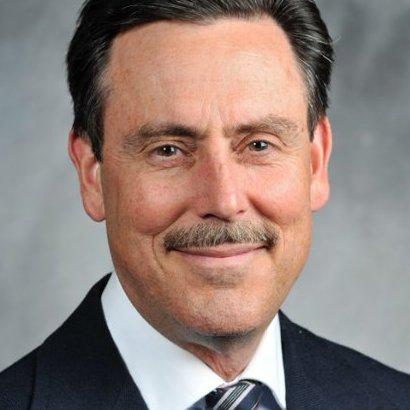
Chemical phobia is a prevalent theme in today’s social media, and chemicals often written up in mainstream news outlets in negative terms. But have you ever stopped to think about the sources of this information? How many of the sources are from scientists? How many of these scientists are toxicologists? How many of these toxicologists, if any, are board-certified? And, hey, what is a toxicologist anyway? Can anyone claim to be one?
Concerns with chemical safety have been around a very long time, leading to the development of academic programs, over 50 years ago, for the training of health scientists in the newly formed discipline of toxicology through a series of federally-funded training grants. One of the many recipients of these training grants was Michael Dourson.
Over 40 years later, Dr. Dourson was introduced at the ACSH 40th year celebration event as the nation’s toxicologist.1 Although this introduction was made somewhat in jest, a quick review of his credentials lends it credence. He currently is the Director of Science at the nonprofit organization, Toxicology Excellence for Risk Assessment, an environmental science NGO that works for both industry and government and builds collaborations with all parties. Among TERA’s highly visible collaborations are the response to the West Virginia Elk River Spill, coordination of the joint EPA-industry Voluntary Children’s Chemical Evaluation Program, review of the 7 government response to the Trade World disaster, and creation of the National Library of Medicine’s International Toxicity Estimates for Risk (ITER).
These credentials led President Trump to nominate Dourson in 2017 for the Assistant Administrator of the Office of Chemical Safety and Pollution Prevention within the Environmental Protection Agency, arguably the highest level position in the federal government for a toxicologist with risk assessment experience, and as a senior advisor to its Administrator. Prior to that, he was a professor at the Risk Science Center at the University of Cincinnati College of Medicine, founder and president of TERA, and employed by EPA in a number of positions.
Dourson is board-certified by the American Board of Toxicology, a fellow of the Academy of Toxicological Sciences and a Fellow of the Society for Risk Analysis. So he boasts not only toxicology credentials but also those in risk assessment. He earned his doctorate in toxicology at the University of Cincinnati College of Medicine.
During his first time at the EPA, Dourson was one of the founders of the agency’s Integrated Risk Information System (IRIS), a program that identifies and characterizes the health hazards of chemicals in the environment. Dourson was awarded a total of four bronze medals while at EPA for his work on IRIS, ambient water criteria, sewage sludge rulemaking, and developing risk methodology. He also served as a member of EPA’s Science Advisory Board for six years.
But Dourson’s award did not stop with EPA. He was among the youngest scientists to be awarded the esteemed Arnold J. Lehman award from the Society of Toxicology, won the International Achievement Award by the International Society of Regulatory Toxicology and Pharmacology, and has 4 individual best-paper-of-the-year awards from different specialty sections within the Society of Toxicology. To round things off, Dourson is also a writer of a series of books entitled Evidence of Faith that examine the intersection of science and the Bible.2
Dourson's organization TERA has studied many chemicals, the use for which has been the matter of appropriate public debate, including chlorpyrifos (a pesticide), diacetyl (a food additive), ammonium perchlorate (a rocket fuel), 1-bromopropane (an industrial solvent), and perfluorooctanoic acid (PFOA) (a plastics production chemical). The determinations of safe occupational exposure limits, safe water standards, threshold limit value, recommended exposure limit and safe dose may vary, sometimes by up to a factor of ten, even among equally qualified investigators.3
Many of these debates came up as part of the social media and newspaper reports during Dourson’s Senate confirmation hearings after his presidential nomination. However, nearly all stories were one-sided, stressing TERA’s work for industry (which is only about 1/3 of the time) rather TERA’s work for governments (about 2/3rds of the time), and touting TERA’s raising of safe doses for industry rather than reporting when TERA lowered industry safe doses (just as often). Dourson responded privately in writing to these accusations and these responses were sent to several US Senators. These responses have now been made public.4
So should you be concerned about chemical exposures? Perhaps the best answer to that is from Dr. Dourson’s comments at the ACSH event, and loosely paraphrased as:
Toxicology is readily understandable; you can get a sense of it in 3 tweets:
- Life is chemistry. We are exposed to tens of thousands of chemicals every day. A cup of coffee has about 1000 chemicals. A potato probably has just as many.
- All chemicals are toxic at some level. Yes, even water. Drink too much and it will kill you. Drink a little bit less and it will disrupt your endocrine system.
- All chemicals have a safe or virtually safe dose. Yes, even arsenic. Although it is toxic at fairly low levels, arsenic is also naturally occurring. Most human exposures, fortunately, are below its virtually safe dose. However, and perhaps surprisingly, arsenic is an essential element in chickens.
Another favorite saying of Dourson’s is actually from Dr. Arnold Lehman of the Food and Drug Administration, and for whom the SOT Lehman award was established, and is paraphrased as:
- Risk assessment is easy. You can learn it in two steps. Each step takes 10 years!
So next time you read a social media post or newspaper article, ask yourself who is behind the statements, and whether they are toxicologists. Better yet, ask a toxicologist for some help, or go to these websites to check out relevant information:
- https://tera.org
- https://www.toxicology.org/index.asp
- http://toxedfoundation.org
- https://tera.org/Alliance%20for%20Risk/index.htm
- https://www.acsh.org
Then again, you may elect to just wait for a biweekly assay on current toxicology topic’s by the nation’s toxicologist, Michael Dourson, who has agreed with us to share some insights.
References
(1) “Remarks on Toxicology, Politics and the Press.” American Council on Science and Health. Featured talk at the ACSH 40th Anniversary Gala Celebration. Washington, D.C. October 24, 2018.
(2) See www.amazon.com.
(3) Gaylor, D.W. (August 1995). "Quick estimate of the regulatory virtually safe dose based on the maximum tolerated dose for rodent bioassays". Regul Toxicol Pharmacol. doi:10.1006/rtph.1995.1069. PMID 7494904.
(4) For a copy, see: https://www.tera.org/about/TERAcollaborativework%2012.8.17.pdf



